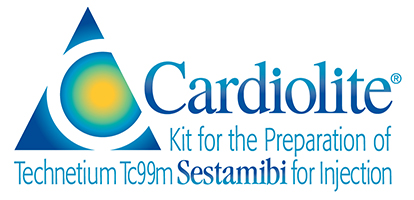
Imaging Protocols
Suggested Cardiolite® One-Day Stress/Rest1,2
An alternative, one-day protocol places the stress portion first.
Stress Portion- Patient undergoes exercise stress
- Inject with 10 mCi of Cardiolite® at peak exercise stress
- Begin exercise stress scan 10–20 minutes after Cardiolite® injection
- Upon completion of the stress imaging and review for quality approval, it is recommended that the patient wait 2-4 hours before receiving rest injection
- Inject with 25–30 mCi of Cardiolite®
- Administer rest injections 30–60 minutes prior to imaging
One-Day Stress/Rest Algorithm
Stress Portion
Rest Portion
- Imaging after stress injection with a technetium agent is much more flexible than with Tl-201 due to different redistribution characteristics of the agents
- Image acquisition can be repeated if there is significant patient motion or instrument malfunction
- Rest image is not considered a true rest image, but rather a post-exercise rest image. The general recommendation is to wait 3–4 hours after the exercise study is complete.
- Henzlova MJ, Duvall WL, Einstein AJ, et al. ASNC imaging guidelines for SPECT nuclear cardiology procedures: Stress, protocols, and tracers. J Nucl Cardiol. 2016;23(3):606-39.
- Cardiolite® [package insert]. N. Billerica, MA: Lantheus Medical Imaging.


